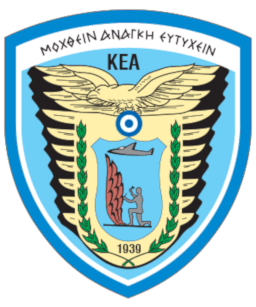
Blackburn Aircraft Limited was a British aircraft manufacturer from 1914 to 1963 that concentrated mainly on naval and maritime aircraft.

Avro was a British aircraft manufacturer. Its designs include the Avro 504, used as a trainer in the First World War, the Avro Lancaster, one of the pre-eminent bombers of the Second World War, and the delta wing Avro Vulcan, a stalwart of the Cold War.

Messerschmitt AG was a German share-ownership limited, aircraft manufacturing corporation named after its chief designer Willy Messerschmitt from mid-July 1938 onwards, and known primarily for its World War II fighter aircraft, in particular the Bf 109 and Me 262. The company survived in the post-war era, undergoing a number of mergers and changing its name from Messerschmitt to Messerschmitt-Bölkow-Blohm before being bought by Deutsche Aerospace in 1989.
The Gerhard Fieseler Werke (GFW) in Kassel was a German aircraft manufacturer of the 1930s and 1940s. The company is remembered mostly for its military aircraft built for the Luftwaffe during the Second World War.

Gerhard Fieseler was a German World War I flying ace, aerobatics champion, and aircraft designer and manufacturer.

N.V. Koolhoven was an aircraft manufacturer based in Rotterdam, Netherlands. From its conception in 1926 to its destruction in the Blitzkrieg in May 1940, the company remained the second major Dutch aircraft manufacturer. Although many of its aircraft were as unsuccessful economically as they were brilliant from a design standpoint, the company managed to score several 'hits', amongst them the FK-58 single-seat monoplane fighter, the FK-50 twin-engine passenger transport, and the FK-41, built in England under licence by Desoutter.

Industria Aeronautică Română (IAR) or Romanian Aeronautic Industry in English, is a Romanian aerospace manufacturer. It is based in Ghimbav, near Brașov, Romania.

The Deutsche Luftstreitkräfte – known before October 1916 as Die Fliegertruppen des deutschen Kaiserreiches – was the air arm of the Imperial German Army. In English-language sources it is usually referred to as the Imperial German Air Service, although that is not a literal translation of either name. German naval aviators of the Marine-Fliegerabteilung were an integral part of the Imperial German Navy. Both military branches operated aeroplanes, observation balloons and airships.

The State Aircraft Factory of Greece, official name Hellenic Air Force Aircraft Depot, usually known through the acronym KEA, originally founded as EAF, is the oldest and most historic Greek aircraft manufacturer. It is a military unit subordinate to the Hellenic Air Force Support Command (HAFSC) and since 2012 it is located at Elefsis Air Base.
The Hellenic Arms Industry is the main arms manufacturer of Greece. Its creation is linked to a desire of Greek governments for "complete self-sufficiency" of Greece in the areas of personal and other weapons.

Pyrkal, founded in 1874, is one of the oldest defense industries in Greece and the country's primary producer of ammunition and explosives. Throughout its history, it has been one of the largest Greek companies. Since its foundation, Pyrkal has played a crucial role as a supplier in all military conflicts faced by the nation and has been a well-established exporter to five continents.
The AEKKEA-RAAB R-29 was a Greek single-seat parasol monoplane trainer and/or light fighter developed by Antonius Raab, a German aircraft designer, with his Greek partners and was one of the Raab-type aircraft developed in Greece.

Raab-Katzenstein RK-26 Tigerschwalbe, also known as the Fieseler F 1 Tigerschwalbe, was a German twin-seat biplane trainer aircraft designed by Gerhard Fieseler by the end of the 1920s.
Raab-Katzenstein was a 1920s German aircraft manufacturer based in Kassel.

Aéroplanes Hanriot et Cie. or simply 'Hanriot' was a French aircraft manufacturer with roots going back to the beginning of aviation. Founded by René Hanriot in 1910 as The Monoplans Hanriot Company Ltd., the company survived in different forms until 1916 when it established itself with the Hanriot-Dupont (HD.) fighters and observation aircraft. The company lasted through several takeovers and structural changes until, in 1936, it merged with Farman to become the Société Nationale de Constructions Aéronautiques du Centre (SNCAC). 'Central Air Works' consortium.
Luise Hoffmann was a German aviator. She was the first woman test pilot in Germany, and possibly in Europe.

The Raab-Katzenstein KL.1 Schwalbe (Swallow) was a German two-seat biplane produced in the 1920s. About fifty were built and the type became well known as an aerobatic aircraft, performing at many displays in the hands of pilots like Gerhard Fieseler.













